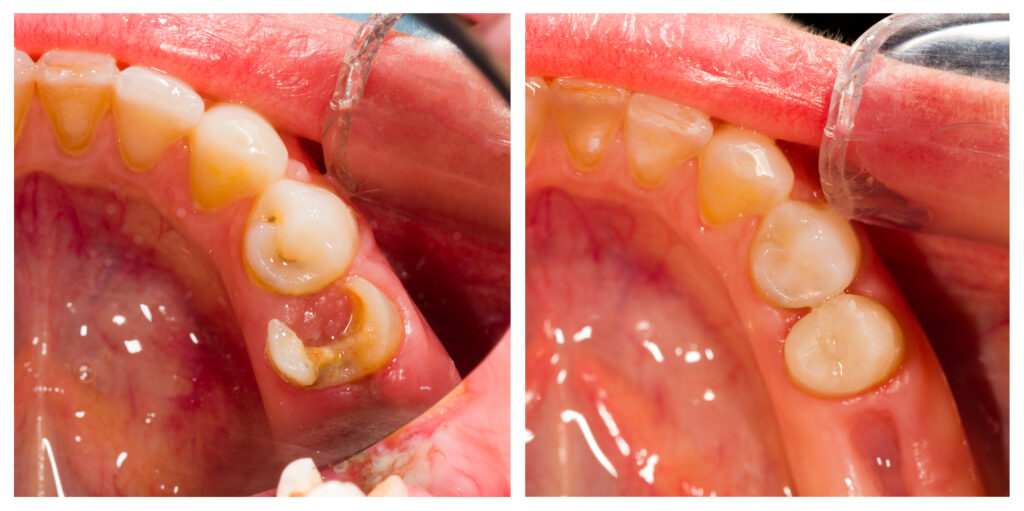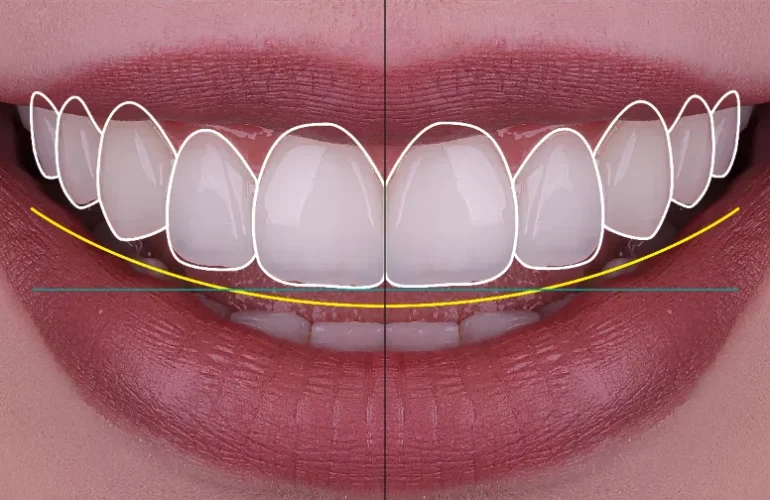Dental fillings are a cornerstone of restorative dentistry, serving to repair a tooth damaged by decay and restore its function. While highly effective, dental fillings, much like any restoration, have a finite lifespan. In Singapore, understanding when to consider an upgrade for your old dental fillings is crucial for maintaining optimal oral health and preventing more extensive dental problems.
This article aims to provide clear, concise, and informative guidance on the signs of worn or damaged teeth, explore safer, modern tooth filling options, and outline the decision-making process for upgrading your dental care.
Key Takeaways:
- Dental fillings are not permanent and require attention over time.
- Recognising signs of wear or damage in old fillings is vital for timely intervention.
- Modern tooth-coloured filling materials offer both functional and aesthetic advantages.
- Regular dental check-ups are essential for monitoring the condition of your existing fillings.
What Are Dental Fillings and Why Do We Need Them?
A dental filling is a material used by a dentist to fill a cavity or hole in a tooth, which has been caused by tooth decay. The primary purpose of a filling is to restore the tooth’s structure, prevent further decay by sealing off the affected area, and return the tooth to its normal shape and function.
Historically, amalgam fillings (also known as silver amalgam fillings or silver fillings) were a common type of dental filling due to their durability and cost-effectiveness. However, with advancements in dental technology, various other types of fillings are now available, offering different benefits in terms of aesthetics and material composition.
How Long Do Dental Fillings Typically Last?
The lifespan of dental fillings can vary significantly based on the filling material used, the size of the filling, the location of the tooth in the mouth, and an individual’s oral hygiene habits and chewing forces.
- Composite Resin Fillings: Composite resin fillings, often referred to as tooth-coloured fillings, generally last between 5 to 7 years, though with reasonable care, they can extend beyond this. Their longevity is influenced by the size of the filling and whether they are placed on front teeth or back teeth.
- Gold Fillings: Gold fillings (inlays/onlays) are exceptionally durable and can last 15 to 30 years or more, making them one of the longest-lasting options.
- Porcelain Inlays/Onlays: Porcelain fillings (also known as ceramic fillings) offer excellent durability, often lasting 10 to 15 years or longer, similar to amalgam, while providing superior aesthetics.
- Glass Ionomer Cement Fillings: These fillings are less durable, usually lasting only a few years, but can be a good option for primary (baby) teeth or as temporary fillings. They are generally not intended as a long-term solution for permanent teeth.
Factors such as consistent grinding or clenching (bruxism) can significantly reduce the lifespan of fillings. Good oral health practices, including regular brushing, flossing, and dental check-ups, are paramount for extending the life of any dental filling.
What Are the Potential Risks of Not Replacing Old, Compromised Dental Fillings?
Neglecting to replace a failing dental filling can lead to a cascade of more serious and often more costly dental problems:
- Progression of Decay: A compromised filling allows tooth decay to advance, potentially reaching the pulp (the innermost part of the tooth containing nerves and blood vessels).
- Tooth Fracture: A weakened tooth or a cracked dental filling can lead to a complete tooth fracture, which may necessitate a dental crown or even tooth extraction if the damage is too severe.
- Infection and Abscess: If decay reaches the pulp, it can cause an infection, leading to a painful dental abscess. This often requires root canal treatment, a more complex dental procedure than replacing a simple filling.
- Increased Cost: Delaying treatment almost invariably results in more extensive and expensive dental treatment down the line. A small cavity under a filling can develop into a larger cavity, potentially requiring a crown or root canal treatment.
When Should You Consider Replacing Your Old Dental Fillings in Singapore?
Determining if and when a dental filling needs replacement is a key aspect of proactive dental care. Here are the primary indicators that it might be time for an upgrade:
1. Are Your Old Fillings Showing Signs of Wear and Tear?
Yes, old dental fillings are susceptible to wear and tear over time, just like natural teeth. This can manifest in several ways:
- Cracks or Fractures: Over time, through the effects of chewing, temperature changes, and general wear and tear, dental fillings, especially older amalgam fillings, can develop cracks. These cracks can extend into the surrounding tooth structure, potentially leading to a damaged tooth that requires a more extensive dental treatment than just a simple replacement.
- Chipping: Portions of the filling material may chip away, or the surrounding natural teeth may chip, compromising the restoration’s integrity. This often occurs at the edges, exposing the underlying tooth structure to decay.
- Wear and Abrasion: The surface of a filling may wear down over time, particularly for materials like composite resin that are softer than enamel or gold. This can lead to an uneven bite, increased tooth sensitivity, and a less effective seal against bacteria.
2. Are You Experiencing Discomfort or Sensitivity Around an Old Dental Filling?
Experiencing discomfort or tooth sensitivity around an existing dental filling is a strong indicator that something is amiss and warrants a visit to your dentist in Singapore.
- Tooth Sensitivity: Sensitivity to hot, cold, or sweet foods and beverages can signal issues such as a leaking filling, recurrent tooth decay under the filling, or even pulp inflammation. This occurs when the dentin, the layer beneath the enamel, becomes exposed or irritated.
- Pain When Biting: Pain experienced when biting down could indicate a crack in the tooth or the filling, or that the filling is too high, causing uneven pressure distribution. It might also suggest a deep cavity or an infection that has reached the nerve.
- Persistent Ache: A dull, persistent ache around a filled tooth may indicate progression of decay, gum inflammation, or, in more severe cases, an infection that has led to an abscess.
3. Do You Notice Dark Spots or Gaps Around Your Old Dental Filling?
Visible changes around an old dental filling are critical signs that it may be failing.
- Secondary Decay: This refers to new tooth decay that forms around or underneath an existing filling. Over time, the bond between the filling material and the natural teeth can weaken, allowing tiny gaps to form where bacteria and food particles can accumulate. This leads to new decay, often undetectable without X-rays, which undermines the healthy tooth structure.
- Gaps or Margins: A visible gap or a compromised margin between the dental filling and the tooth indicates that the seal is broken. This allows micro-leakage, where bacteria and food debris penetrate, accelerating decay.
- Discolouration: Dark spots around the filling may indicate leakage or the presence of new tooth decay. For amalgam fillings, while the filling itself is dark, new dark spots on the surrounding tooth could signal a problem.
4. Aesthetic Concerns: Do You Want a More Natural-Looking Smile?
For many, the aesthetic impact of old metal fillings, particularly silver amalgam fillings, is a significant concern. While functionally sound, their dark metallic appearance can detract from a natural-looking smile, especially on front teeth or when visible in everyday conversation.
Modern tooth-coloured fillings, such as composite resin fillings and porcelain fillings, offer an excellent solution for those seeking to enhance their smile by blending seamlessly with their natural teeth. Replacing old amalgam fillings with these aesthetic alternatives can significantly enhance the overall appearance of your smile without compromising durability or function.
Exploring Modern Tooth Filling Options in Singapore: What’s Available?
In Singapore’s modern dental practices, patients have a range of sophisticated dental filling materials beyond traditional amalgam. These options cater to varying needs in terms of durability, aesthetics, and cost.
| Filling Type | Material Composition | Advantages | Disadvantages | Typical Lifespan | Cost in Singapore (Relative) |
| Composite Resin | Acrylic resin and finely ground glass-like particles | Tooth-coloured (aesthetics), bonds to tooth structure, mercury-free, versatile. | Less durable than amalgam/gold for large fillings, can stain over time, and may require replacement sooner. | 5-7 years | Moderate |
| Porcelain (Ceramic) | Ceramic material | Highly aesthetic (tooth-coloured), very durable, stain-resistant, custom-made. | Higher cost, can be brittle under extreme pressure, and requires multiple dental visits (for indirect fillings). | 10-15+ years | High |
| Gold Fillings (Inlays/Onlays) | Gold alloy | Extremely durable, long-lasting, does not corrode, and is kind to opposing teeth. | High cost, metallic appearance (not aesthetic), requires multiple dental visits (indirect filling). | 15-30+ years | Highest |
| Glass Ionomer Cement (GIC) | Acrylic and fluoroaluminosilicate glass | Releases fluoride (beneficial for decay prevention), bonds well to the tooth, and is tooth-coloured. | Weaker than composite/amalgam, less durable, mainly for small, non-load-bearing fillings or temporary fillings. | 3-5 years | Lower |
1. Composite Resin Fillings (Tooth-Coloured Fillings)
Composite resin fillings are the most popular tooth-coloured fillings today. They are made from an acrylic resin and finely ground glass-like particles. The main advantage is their aesthetic appeal, as the composite material can be matched precisely to your natural teeth, making them virtually invisible. This makes them an excellent choice for your front teeth and other visible areas.
The procedure for a composite filling involves preparing the tooth, applying a bonding agent, and then layering the composite resin into the cavity. Each layer is hardened with a special light. This process allows the composite to bond directly to the tooth structure, providing additional support to the decayed teeth. It is not as durable as amalgam for very large fillings, but modern composite resins offer good longevity and are a mercury-free option.
2. Porcelain Fillings (Inlays and Onlays)
Porcelain fillings, also known as ceramic fillings, are a type of indirect dental filling. This means they are not directly applied to the tooth in a single dental visit. Instead, after preparing the cavity, an impression is taken, and the porcelain restoration is custom-made in a dental lab. These are then bonded into place during a second dental visit.
- Inlays are used when the dental filling lies within the cusps (the bumps on the chewing surface) of the tooth.
- Onlays cover one or more cusps, providing more extensive coverage than an inlay but less than a full dental crown.
Porcelain fillings offer exceptional aesthetics, matching the tooth colour perfectly, and are highly durable and stain-resistant. They are often chosen for larger cavities where a direct composite filling might not provide sufficient strength, offering a strong, long-lasting solution while preserving more of the healthy tooth structure compared to a dental crown.
The durability and aesthetic benefits justify the higher cost of these premium indirect dental fillings in Singapore.
3. Gold Fillings (Inlays and Onlays)
While less common today due to their metallic appearance, gold fillings remain an option, particularly for their superior durability. Similar to porcelain, gold fillings are indirect fillings, meticulously crafted in a dental lab to fit the specific shape of the cavity. They are known for their exceptional longevity and resistance to corrosion and fracture.
Gold is also biologically compatible and well-tolerated by gum tissues. While the initial cost of tooth fillings made from gold can be substantial, their extended lifespan often makes them a cost-effective choice for your dental health in the very long term.
4. Glass Ionomer Fillings
Glass ionomer cement (GIC) fillings are tooth-coloured fillings that release fluoride, which can help prevent further tooth decay. They bond well to the tooth structure, making them suitable for small fillings, particularly in areas not subjected to heavy chewing forces, or as a temporary filling.
Glass ionomer fillers are less durable than composite or amalgam fillers, but their fluoride-releasing properties make them a good option for children or in situations where additional decay protection is desired.
The Replacement Process: What to Expect at Your Singapore Dentist
Replacing an old dental filling at Elements Dental in Singapore is a straightforward dental filling procedure designed for your comfort and optimal outcome.
- Consultation and Diagnosis: Your dentist will conduct a thorough examination, including X-rays, to assess the condition of your existing fillings and identify any underlying issues, such as secondary decay or cracks. We will discuss the various types of dental filling options suitable for your situation.
- Anaesthesia: To ensure a pain-free experience, a local anaesthetic will be administered to numb the area around the tooth.
- Removal of Old Filling and Decay: The old dental filling material will be carefully removed, along with any existing tooth decay. We use precise techniques to preserve as much of your healthy tooth structure as possible.
- Preparation of the Tooth: The cavity will be meticulously cleaned and shaped to ensure proper retention and a strong bond for the new filling.
- Placement of New Filling: The chosen dental filling material (e.g., composite resin, porcelain inlay/onlay) will be expertly placed and sculpted to restore the tooth’s natural contour and function. For indirect fillings, a temporary filling will be placed, and you’ll return for the permanent placement after the dental lab fabricates the custom restoration.
- Polishing and Adjustment: The new dental filling will be polished to a smooth finish, and your bite will be carefully checked and adjusted to ensure comfort and proper occlusion.
Choosing the Right Dentist for Your Dental Filling Replacement in Singapore
When considering a dental filling replacement, particularly for older amalgam fillings, selecting an experienced dentist in Singapore is paramount. At Elements Dental, we pride ourselves on:
- Experience and Expertise: Our dentists are highly proficient in all aspects of restorative dentistry, from simple composite fillings to complex indirect dental fillings.
- Modern Technology and Materials: We utilise state-of-the-art equipment and the latest advancements in dental filling material to ensure durable, aesthetic, and long-lasting results.
- Patient-Centred Care: We prioritise your comfort and understanding, ensuring you are well-informed about every dental treatment option and the filling procedure.
- Commitment to Oral Health: Our focus extends beyond just treating issues; we aim to educate and empower our patients to maintain excellent overall dental health.
Post-Replacement Care: Maintaining Your New Fillings
After your dental filling replacement, proper care is essential to maximise the lifespan of your new restoration and maintain your oral health.
- Oral Hygiene: Continue with diligent oral hygiene practices: brushing twice daily with fluoride toothpaste and flossing daily.
- Dietary Considerations: Avoid chewing on hard foods or ice, especially immediately after a filling, to prevent damage to the filling.
- Regular Dental Check-ups: Regular dental check-ups and professional cleanings every six months are crucial. Your dentist will monitor the condition of all your fillings, check for any signs of decay, and address any potential issues early.
- Address Sensitivity: Some tooth sensitivity to hot or cold temperatures may occur immediately after a filling procedure, but this usually subsides within a few days to a few weeks. If sensitivity persists or worsens, contact your dentist.
Upgrade Your Teeth Filling in Singapore
Old dental fillings are not designed to last indefinitely, and understanding the signs that they need replacement is a vital component of proactive dental care. Do not wait until a small cavity develops into a major dental issue. If you suspect your old amalgam fillings may need an upgrade, or if you simply wish to discuss modern tooth-coloured fillings, we encourage you to schedule a consultation.
Book your appointment at Elements Dental or visit our clinic at 895 Bukit Timah Road and make your teeth’s health your priority.







